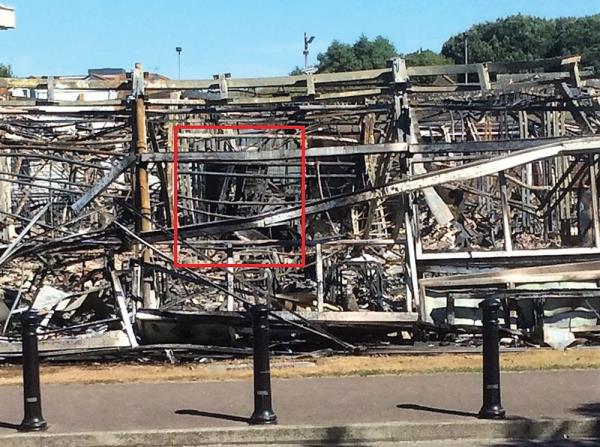15 March 2017

In August last year, fire destroyed 80 per cent of the school, including the rack-mounted servers (outlined in red in the above picture) and the network.
Founded in 1963 as a comprehensive school and established as an academy in 2011, The Academy, Selsey, has 400 students and is part of The Kemnal Academies Trust (TKAT).
It had been using a traditional tape-based method to backup its 1TB of student data.
IT manager Daniel Sapseid says this would frequently take two days: “I would often leave the backup process to complete over the weekend and then would take the tapes home with me. Looking back, I see it wasn’t the most efficient way to store critical student data as a large part of my time was spent ensuring the backups had been completed in the first place.”
He decided to update the backup method and attended an exhibition where he met Redstor. Following a demonstration and trial, the company’s Backup Service for Schools (RBUSS) was tested and then rolled out across the school.
Redstor claims its service automatically protects data residing on desktops, laptops, servers and network attached storage devices according to retention policies and schedules set by the user.
Data is compressed, encrypted and sent to one of the company’s data centres and then mirrored to a second. Redstor says that when data recovery is required, users can select the data to restore using an “intuitive” interface or for large data sets, the data can be couriered back to site for local, high-speed LAN-based recovery.
“Now the process is completed in a matter of a few hours, and I receive an email telling me the backup is complete, which gives me great peace of mind,” says Sapseid.
In August last year, fire destroyed 80 per cent of the school, including the rack-mounted servers (outlined in red in the above picture) and the network.
Sapseid says: “It goes without saying that I don’t even want to think about what the consequences of completely losing all that information would have been.”
Using a high-speed broadband connection, he was able to restore all critical student and staff data within two hours. Less critical data took another eight-ten hours because a low-speed USB external hard drive was used for part of the process.
“If we had still been using the tape-based backups it would have taken significantly longer – if it had worked at all, as the servers would have had to be rebuilt in order to complete a restore,” concludes Sapseid.








